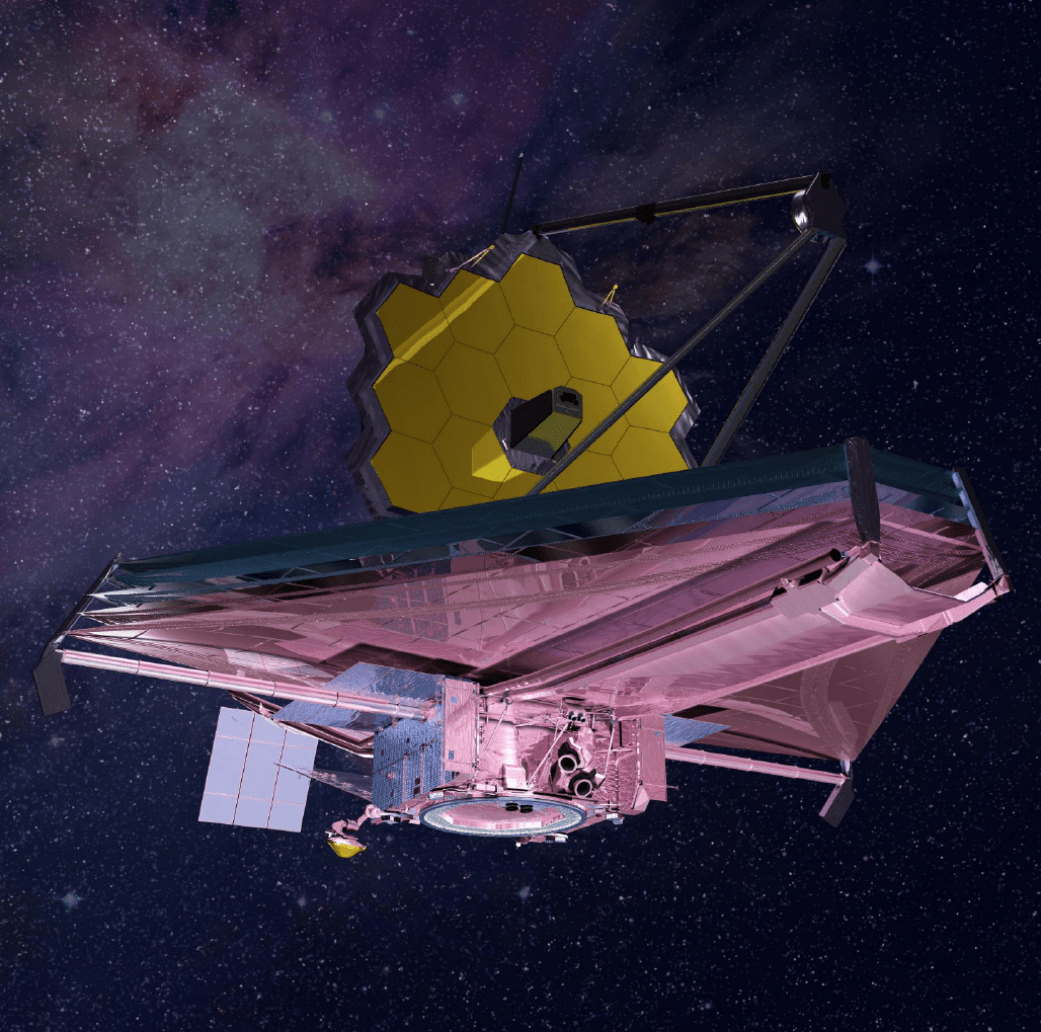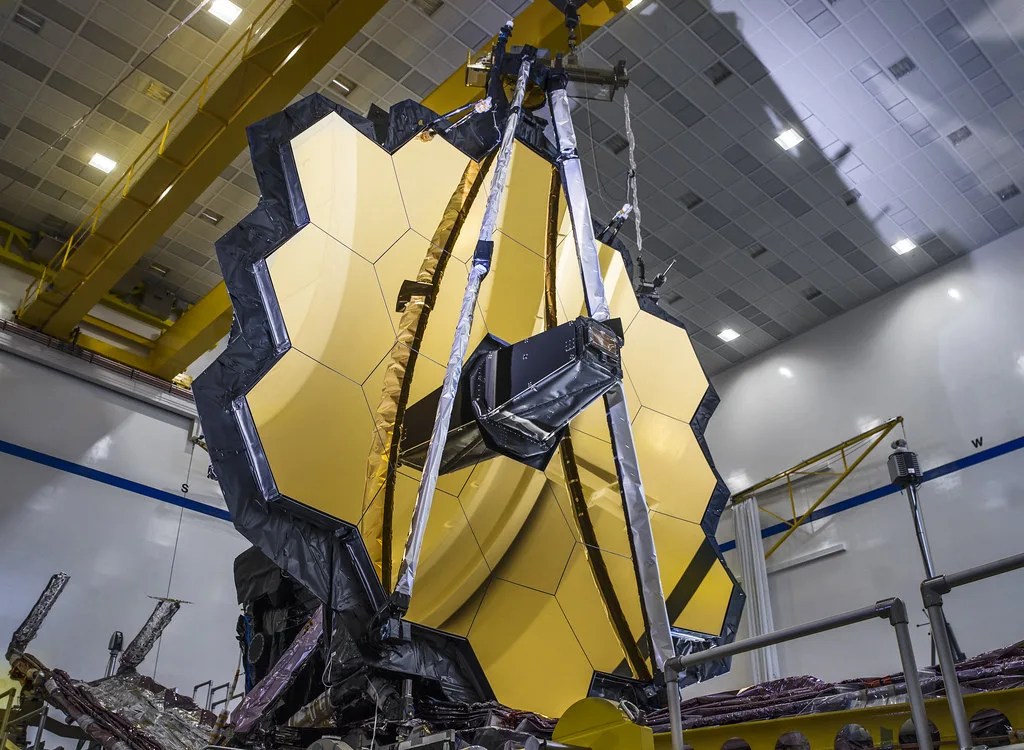When NASA’s James Webb Space Telescope launches in 2021, one of its most anticipated contributions to astronomy will be the study of exoplanets—planets orbiting distant stars. Among the most pressing questions in exoplanet science is: Can a small, rocky exoplanet orbiting close to a red dwarf star hold onto an atmosphere?
In a series of four papers in the Astrophysical Journal, a team of astronomers proposes a new method of using Webb to determine whether a rocky exoplanet has an atmosphere. The technique, which involves measuring the planet’s temperature as it passes behind its star and then comes back into view, is significantly faster than more traditional methods of atmospheric detection like transmission spectroscopy.
“We find that Webb could easily infer the presence or absence of an atmosphere around a dozen known rocky exoplanets with less than 10 hours of observing time per planet,” said Jacob Bean of the University of Chicago, a co-author on three of the papers.
Astronomers are particularly interested in exoplanets orbiting red dwarf stars for a number of reasons. These stars, which are smaller and cooler than the Sun, are the most common type of star in our galaxy. Also, because a red dwarf is small, a planet passing in front of it will appear to block a larger fraction of the star’s light than if the star were larger, like our Sun. This makes the planet orbiting a red dwarf easier to detect through this “transit” technique.
Red dwarfs also produce a lot less heat than our Sun, so to enjoy habitable temperatures, a planet would need to orbit quite close to a red dwarf star. In fact, to be in the habitable zone — the area around the star where liquid water could exist on a planet’s surface — the planet has to orbit much closer to the star than Mercury is to the Sun. As a result, it will transit the star more frequently, making repeated observations easier.
But a planet orbiting so close to a red dwarf is subjected to harsh conditions. Young red dwarfs are very active, blasting out huge flares and plasma eruptions. The star also emits a strong wind of charged particles. All of these effects could potentially scour away a planet’s atmosphere, leaving behind a bare rock.
“Atmospheric loss is the number one existential threat to the habitability of planets,” said Bean.
Another key characteristic of exoplanets orbiting close to red dwarfs is central to the new technique: They are expected to be tidally locked, meaning they have a permanent dayside and nightside. As a result, we see different phases of the planet at different points in its orbit. When it crosses the face of the star, we see only the planet’s nightside. But when it is about to cross behind the star (an event known as a secondary eclipse), or is just emerging from behind the star, we can observe the dayside.
If a rocky exoplanet lacks an atmosphere, its dayside would be very hot, just as we see with the Moon or Mercury. However if a rocky exoplanet has an atmosphere, the presence of that atmosphere is expected to lower the dayside temperature that Webb would measure. It could do this in two ways. A thick atmosphere could transport heat from the dayside to the nightside through winds. A thinner atmosphere could still host clouds, which reflect a portion of the incoming starlight thereby lowering the temperature of the planet’s dayside.
“Whenever you add an atmosphere, you’re going to lower the temperature of the dayside. So if we see something cooler than bare rock, we would infer it’s likely a sign of an atmosphere,” explained Daniel Koll of the Massachusetts Institute of Technology (MIT), the lead author on two of the papers.
Webb is ideally suited for making these measurements because it has a much larger mirror than other telescopes such as NASA’s Hubble or Spitzer space telescopes, which allows it to collect more light, and it can target the appropriate infrared wavelengths.
The team’s calculations show that Webb should be able to detect the heat signature of a planet’s atmosphere in one to two secondary eclipses – just a few hours of observing time. In contrast, detecting an atmosphere through spectroscopic observations would typically require eight or more transits for these same planets.
Transmission spectroscopy, which studies starlight filtered through the planet’s atmosphere, also suffers from interference due to clouds or hazes, which can mask the molecular signatures of the atmosphere. In that case the spectral plot, rather than showing pronounced absorption lines due to molecules, would be essentially flat.
“In transmission spectroscopy, if you get a flat line, it doesn’t tell you anything. The flat line could mean the universe is full of dead planets that don’t have an atmosphere, or that the universe is full of planets that have a whole range of diverse, interesting atmospheres, but they all look the same to us because they’re cloudy,” said Eliza Kempton of the University of Maryland, a co-author on three of the papers.
“Exoplanet atmospheres without clouds and hazes are like unicorns – we just haven’t seen them yet, and they may not exist at all,” she added.
The team emphasized that a cooler than expected dayside temperature would be an important clue, but it would not absolutely confirm an atmosphere exists. Any remaining doubts about the presence of an atmosphere can be ruled out with follow-up studies using other methods like transmission spectroscopy.
The new technique’s true strength will be in determining what fraction of rocky exoplanets likely have an atmosphere. Approximately a dozen exoplanets that are good candidates for this method were detected during the past year. More are likely to be found by the time Webb is operational.
“The Transiting Exoplanet Survey Satellite, or TESS, is finding piles of these planets,” stated Kempton.
The secondary eclipse method has one key limitation: it works best on planets that are too hot to be located in the habitable zone. However, determining whether or not these hot planets host atmospheres holds important implications for habitable-zone planets.
“If hot planets can hold onto an atmosphere, cooler ones should be able to at least as well,” said Koll.
The James Webb Space Telescope will be the world’s premier space science observatory when it launches in 2021. Webb will solve mysteries in our solar system, look beyond to distant worlds around other stars, and probe the mysterious structures and origins of our universe and our place in it. Webb is an international project led by NASA with its partners, ESA (European Space Agency) and the Canadian Space Agency.































